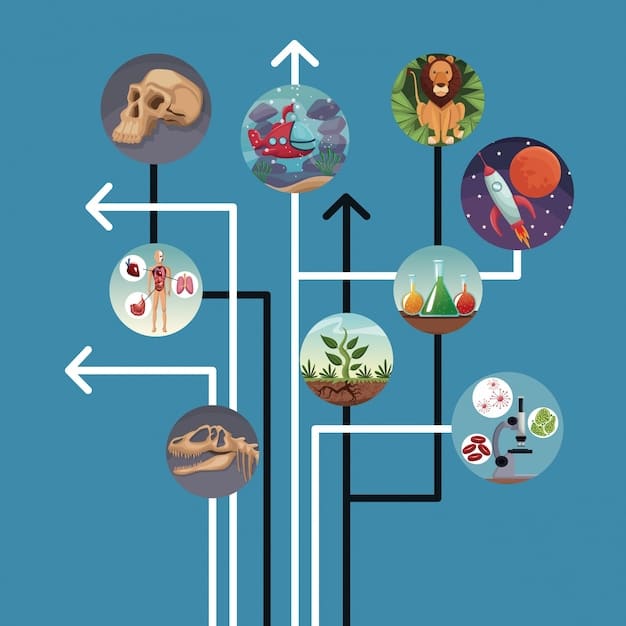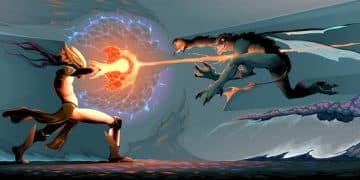Wild Rift Pro Scene: Tier 2 Teams Ready for 2025 Promotion?

The Wild Rift pro scene is evolving, and as we approach 2025, a critical question emerges: are the Tier 2 teams equipped to navigate the new promotion/relegation system and compete effectively for a spot in the top tier?
The Wild Rift Pro Scene: Are Tier 2 Teams Ready for the New Promotion/Relegation System in 2025? This is a crucial juncture for aspiring organizations and players looking to break through the established hierarchy.
Wild Rift’s Evolving Competitive Landscape
The competitive landscape of Wild Rift is in constant flux. Riot Games continues to refine its esports ecosystem, seeking to create a sustainable and engaging experience for players and fans alike. A key component of this ecosystem is the promotion/relegation system, which determines which teams have the opportunity to compete at the highest level.
As we look ahead to 2025, the implementation of a new promotion/relegation system brings both opportunities and challenges for Tier 2 teams. To understand whether these teams are truly ready, we need to delve into several critical areas. This includes their current skill level, access to resources, coaching infrastructure, and ability to adapt to changing meta and strategies.

The Importance of a Robust Promotion/Relegation System
A well-designed promotion/relegation system is vital for the health of any esports league. It ensures that the top teams remain competitive and prevents stagnation by allowing fresh talent to enter the scene. It also motivates Tier 2 teams to strive for improvement, invest in their infrastructure, and develop their players.
- Encourages continuous improvement and innovation.
- Provides opportunities for new talent to emerge and challenge established teams.
- Maintains a dynamic and engaging competitive environment.
- Increases viewership and fan engagement by creating compelling storylines.
Ultimately, a successful promotion/relegation system benefits the entire Wild Rift community. It creates a more level playing field, promotes fair competition, and ensures that the best teams are consistently competing at the highest level.
Assessment of Current Tier 2 Teams
To accurately gauge the readiness of Tier 2 teams for the new promotion/relegation system, we must first conduct a thorough assessment of their current standing. This includes evaluating their individual player skill, team synergy, strategic understanding, and overall performance in regional tournaments and qualifiers.
Many Tier 2 teams are composed of highly skilled players with the potential to compete at the top level. However, they often lack the organizational support, resources, and coaching necessary to consistently perform at their best.
Analysing team performance and player statistics from recent tournaments can provide valuable insights into the strengths and weaknesses of Tier 2 teams. Also, comparing them against top-tier teams highlight areas that require improvement.
Key Factors in Evaluating Tier 2 Teams
Several factors must be considered when assessing the readiness of Tier 2 teams.
- Individual Player Skill: Mechanics, game sense, and adaptability.
- Team Synergy: Communication, coordination, and strategic execution.
- Coaching and Support Staff: Strategic guidance, player development, and team management.
- Financial Resources: Infrastructure, player salaries, and travel expenses.
By examining these factors, we can develop a comprehensive understanding of the challenges facing Tier 2 teams and the steps they need to take to improve.

Challenges Faced by Tier 2 Teams
Tier 2 teams in the Wild Rift Pro Scene face a unique set of challenges that often hinder their ability to compete effectively and rise through the ranks. These challenges can range from limited financial resources to inadequate coaching support, impacting their overall performance and competitiveness.
One of the primary hurdles for Tier 2 teams is the struggle to secure adequate funding. Without sufficient financial backing, these teams often struggle to provide competitive salaries to their players, maintain quality training facilities, and afford travel expenses for tournaments.
Addressing these challenges is crucial for ensuring a fair and competitive environment in the Wild Rift Pro Scene. By providing Tier 2 teams with the necessary resources and support, we can foster a more balanced ecosystem that encourages growth and innovation.
Resource Constraints and Infrastructure
The lack of resources extends beyond just financial limitations. Tier 2 teams often lack access to proper training facilities, advanced analytics tools, and experienced support staff, including coaches and analysts. This can significantly impact their ability to develop strategies, improve player skills, and effectively analyze their opponents.
- Limited access to high-quality training facilities and equipment.
- Insufficient funding for hiring experienced coaches and analysts.
- Lack of advanced data analytics tools for performance analysis.
- Inability to provide competitive salaries and benefits to players.
Potential Impacts of the New System
The introduction of a new promotion/relegation system in 2025 could have several significant impacts on the Wild Rift pro scene, especially for Tier 2 teams. These impacts could range from increased opportunities for advancement to heightened competition and pressure. Understanding these potential outcomes is crucial for teams to prepare and adapt effectively.
One of the primary goals of a new promotion/relegation system is to create a more dynamic and competitive environment.
By providing Tier 2 teams with clearer pathways to the top tier, the system can incentivize greater investment in player development, strategic innovation, and team infrastructure.
Positive impacts that could arise from the implementation of the new system in 2025 include boosting player confidence and morale.
It also encourages strategic innovation; teams are forced to develop deeper strategies to stand out in a highly competitive environment.
Positive Outcomes
- Increased opportunities for Tier 2 teams to compete in higher-level tournaments.
- Greater exposure for emerging talent, leading to potential sponsorships and partnerships.
- Enhanced competition among all teams, driving overall skill and strategy development.
- A more engaging and dynamic viewing experience for fans.
On the other hand, if the implemented system in 2025 is too rigid and doesn’t give appropriate consideration and importance to the needs of the Tier 2 teams, it could result in a negative impact to the Wild Rift pro scene.
Strategies for Tier 2 Teams to Succeed
For Tier 2 teams to excel under the new promotion/relegation system in 2025, a multifaceted approach is required. This includes focusing on player development, strategic innovation, team building, and effective resource management.
One of the most critical aspects for Tier 2 teams is to invest in player development.
Nurturing young talent and honing their skills can lead to a significant competitive advantage. Establishing a clear and strategic plan is paramount for the success of Tier 2 teams. This includes identifying strengths and weaknesses, setting achievable goals, and regularly assessing progress.
Exploring partnership opportunities with established esports organizations or sponsors is essential.
These partnerships can provide financial support, access to better resources, and valuable mentorship.
Key Steps for Tier 2 Teams
- Implement structured training programs focused on individual skill development and team synergy.
- Foster a strong team culture that promotes communication, collaboration, and mutual support.
- Develop diverse strategies and adapt quickly to meta changes.
- Utilize data analytics to identify areas for improvement and inform strategic decisions.
To keep up with meta changes, teams must invest in staying up to date with latest trends and champion statistics to have the edge over top tier teams.
Future Outlook and Recommendations
Looking ahead to 2025 and beyond, the future of Tier 2 teams in the Wild Rift Pro Scene hinges on their ability to adapt, innovate, and overcome the challenges they face. By implementing strategic changes, investing in player development, and leveraging available resources, these teams can position themselves for success in the new promotion/relegation system.
One of the primary strategies for Tier Wild Rift organizations should consider is to encourage the growth of grassroot events and tournaments.
This will allow teams to come together to test and improve their strategies in an open environment.
Establishing clear and transparent communication channels between Riot Games and Tier 2 teams is crucial.
This ongoing dialogue will help address concerns, provide feedback on system improvements, and foster a collaborative environment.
- Provide more opportunities for Tier 2 teams to participate in official tournaments and qualifiers.
- Offer financial support and resources to help Tier 2 teams improve their infrastructure and player development programs.
- Establish mentorship programs pairing Tier 2 teams with experienced coaches and players from the top tier.
| Key Point | Brief Description |
|---|---|
| 🚀 Promotion/Relegation System | New system impacts, opportunities, and challenges for Tier 2 teams. |
| 💰 Resource Constraints | Limited funding affects Tier 2 team’s infrastructure and coaching. |
| 💪 Strategies for Success | Focus on player development and team synergy for Tier 2 rise. |
| 🔮 Future Recommendations | Support, transparency & grassroots events vital for Tier 2 growth. |
FAQs
▼
The promotion/relegation system is a competitive structure where teams move between different tiers based on their performance, with top teams moving up (promotion) and bottom teams moving down (relegation).
▼
It ensures competitiveness, prevents stagnation by allowing new talent to emerge, and motivates Tier 2 teams to improve and invest in their infrastructure and player development.
▼
Tier 2 teams often face limited financial resources, lack proper coaching and analyst support, and struggle with access to quality training facilities necessary to compete effectively.
▼
By focusing on player development/team synergy, strategic innovation, building strong team culture, using data analytics effectively, constantly adapting to the meta, securing partnerships/sponsorships.
▼
The future depends on adaptability, innovation, and overcoming challenges. Strategic changes/investments in player development can position these teams for success in the promotion/relegation system.
Conclusion
In conclusion, the preparedness of Tier 2 teams for the new promotion/relegation system in 2025 hinges on their ability to address key challenges and strategically leverage available opportunities. The Wild Rift Pro Scene is on the cusp of a dynamic shift, and the proactive measures taken by these teams will ultimately determine their trajectory in this evolving landscape.





